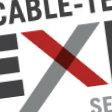Distributed architecture promises to be one of the hottest topics at SCTE Cable-Tec Expo 2014, but not everyone agrees on the right way to carry it out.

DENVER -- As the Society of Cable Telecommunications Engineers (SCTE) prepares to host its annual Cable-Tec Expo here this week, one theme promises to dominate the event from the keynote sessions down to the show floor demos: how to get better performance out of cable's existing HFC networks.
One of the hottest tech debates now taking place in the industry is whether and how to push more of the traditional cable headend functions deeper into the network. The more intelligence that gets shifted to the node, the more cable operators can save on real estate, as well as power and cooling costs back at the headend. Perhaps more importantly, however, by driving cable headend functions closer to end users, operators can also boost the critical signal-to-noise ratio (SNR) in their networks and maximize bandwidth usage.
There are a number of options for distributed cable architectures, but one strategy that is currently in the spotlight is Remote PHY. Remote PHY literally means to remote the physical, or PHY, layer of a cable modem termination system (CMTS) or Converged Cable Access Platform (CCAP) down to the node. This pushes the IP-to-RF conversion process deeper into the network and creates a digital link where an analog one previously existed.
Remote PHY is only one option, however. Further along on the spectrum (so to speak) is the idea of Distributed CCAP, which moves most, if not all, of the cable-specific processing out of the headend by remoting both the MAC and PHY layers. The benefit of this approach is that cable companies could not only improve performance, but also turn the cable headend into more of a standardized data center. All of the cable-specific RF processing would take place closer to the edge of the network.
So where do operators stand on the issue? Right now, there's interest on all sides. Reflecting both side of the debate is Jorge Salinger, vice president of access architecture of Comcast Corp. (Nasdaq: CMCSA, CMCSK), who spoke on the topic of distributed architectures at Light Reading's Cable Next-Gen Technologies & Strategies conference back in March. Salinger talked about how his team is currently focused on developing Remote PHY technology further. As part of the process, Comcast is working on product specifications for both a Remote PHY node and the Remote PHY line card that would need to be put in a CCAP chassis in the headend. (See Salinger Draws Comcast CCAP Roadmap.)
However, Salinger also expressed interest in exploring a Distributed CCAP approach, which would remote both the MAC and the PHY and place them in the network node. (See Comcast Pursues Remote PHY.)
At the same time, equipment suppliers are swarming all over the distributed architecture trend. Some vendors -- such as Arris Group Inc. (Nasdaq: ARRS), Aurora Networks Inc. (now part of Pace Micro Technology ), Casa Systems Inc. and Cisco Systems Inc. (Nasdaq: CSCO) -- are largely developing and/or promoting Remote PHY solutions that would be compatible with existing CCAP equipment. Others, like Harmonic Inc. (Nasdaq: HLIT) and Huawei Technologies Co. Ltd. , are introducing Distributed CCAP products. (See Life After CCAP, Harmonic Pushes CCAP Into the Network and Huawei Plugs Distributed CCAP.)
And then there's start-up company Gainspeed , which is marketing a Virtual CCAP solution, a twist on Distributed CCAP that takes particular advantage of both SDN and NFV technologies. (See Q&A: Gainspeed's New CEO Rides IP Wave .)
Get the latest updates on cable's next-gen network developments by visiting Light Reading's CCAP/next-gen nets content channel.
Given that CCAP itself is still just in the early deployment phases, it will likely be some time before more distributed architectures are implemented in any significant way. Even when operators do consider deploying Remote PHY and Distributed CCAP technologies, there likely will never be a wholesale effort to rip and replace existing equipment. Instead, operators will probably install new gear as node splits naturally occur, and as performance needs warrant an upgrade at particular sites.
In the meantime, the discussion over when, where, and how to shift to more distributed networks will play on and heat up. So look out for the debate here at the Colorado Convention Center this week.
— Mari Silbey, special to Light Reading
About the Author(s)
You May Also Like










